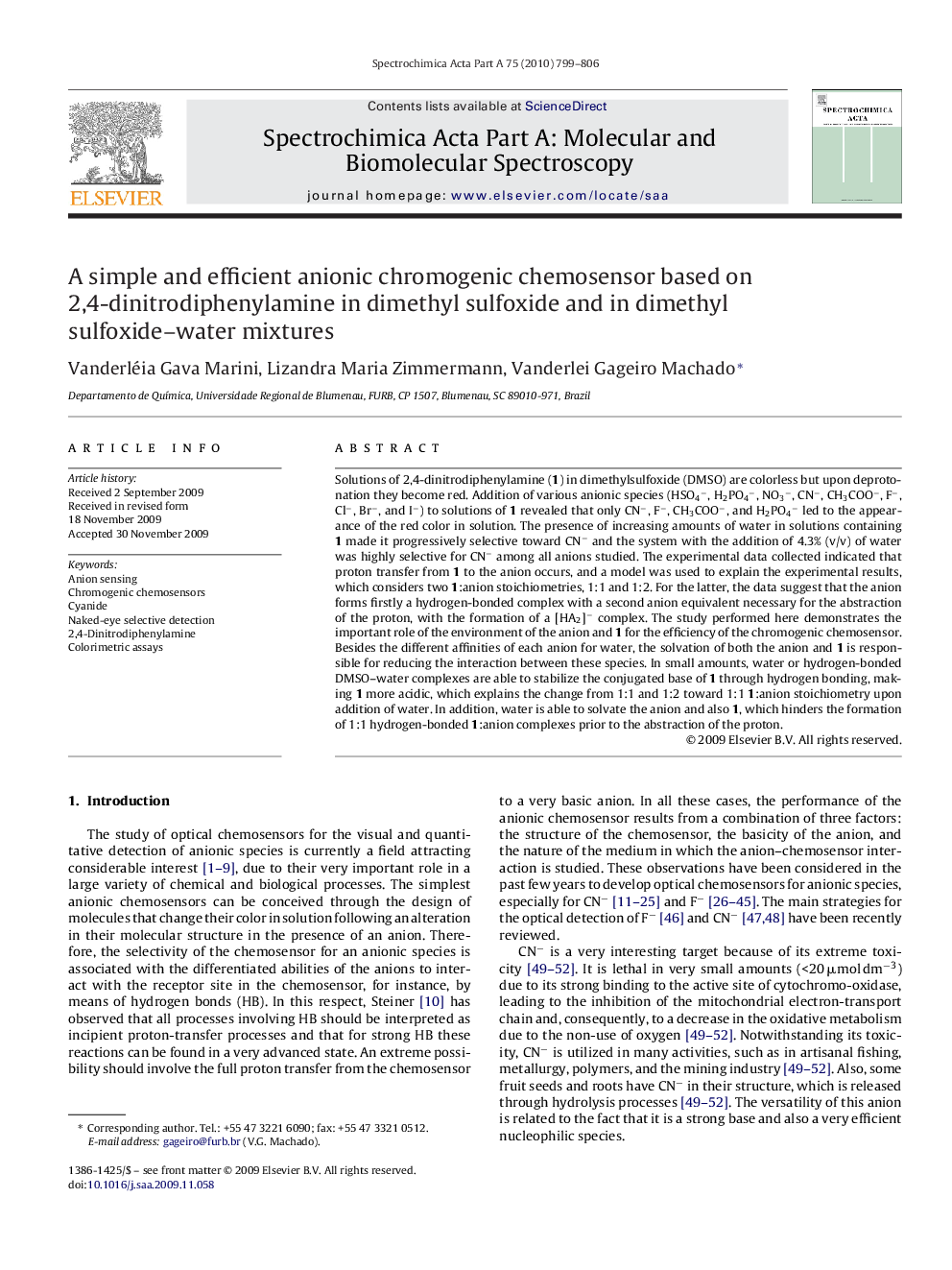| Article ID | Journal | Published Year | Pages | File Type |
|---|---|---|---|---|
| 1237220 | Spectrochimica Acta Part A: Molecular and Biomolecular Spectroscopy | 2010 | 8 Pages |
Solutions of 2,4-dinitrodiphenylamine (1) in dimethylsulfoxide (DMSO) are colorless but upon deprotonation they become red. Addition of various anionic species (HSO4−, H2PO4−, NO3−, CN−, CH3COO−, F−, Cl−, Br−, and I−) to solutions of 1 revealed that only CN−, F−, CH3COO−, and H2PO4− led to the appearance of the red color in solution. The presence of increasing amounts of water in solutions containing 1 made it progressively selective toward CN− and the system with the addition of 4.3% (v/v) of water was highly selective for CN− among all anions studied. The experimental data collected indicated that proton transfer from 1 to the anion occurs, and a model was used to explain the experimental results, which considers two 1:anion stoichiometries, 1:1 and 1:2. For the latter, the data suggest that the anion forms firstly a hydrogen-bonded complex with a second anion equivalent necessary for the abstraction of the proton, with the formation of a [HA2]− complex. The study performed here demonstrates the important role of the environment of the anion and 1 for the efficiency of the chromogenic chemosensor. Besides the different affinities of each anion for water, the solvation of both the anion and 1 is responsible for reducing the interaction between these species. In small amounts, water or hydrogen-bonded DMSO–water complexes are able to stabilize the conjugated base of 1 through hydrogen bonding, making 1 more acidic, which explains the change from 1:1 and 1:2 toward 1:1 1:anion stoichiometry upon addition of water. In addition, water is able to solvate the anion and also 1, which hinders the formation of 1:1 hydrogen-bonded 1:anion complexes prior to the abstraction of the proton.
